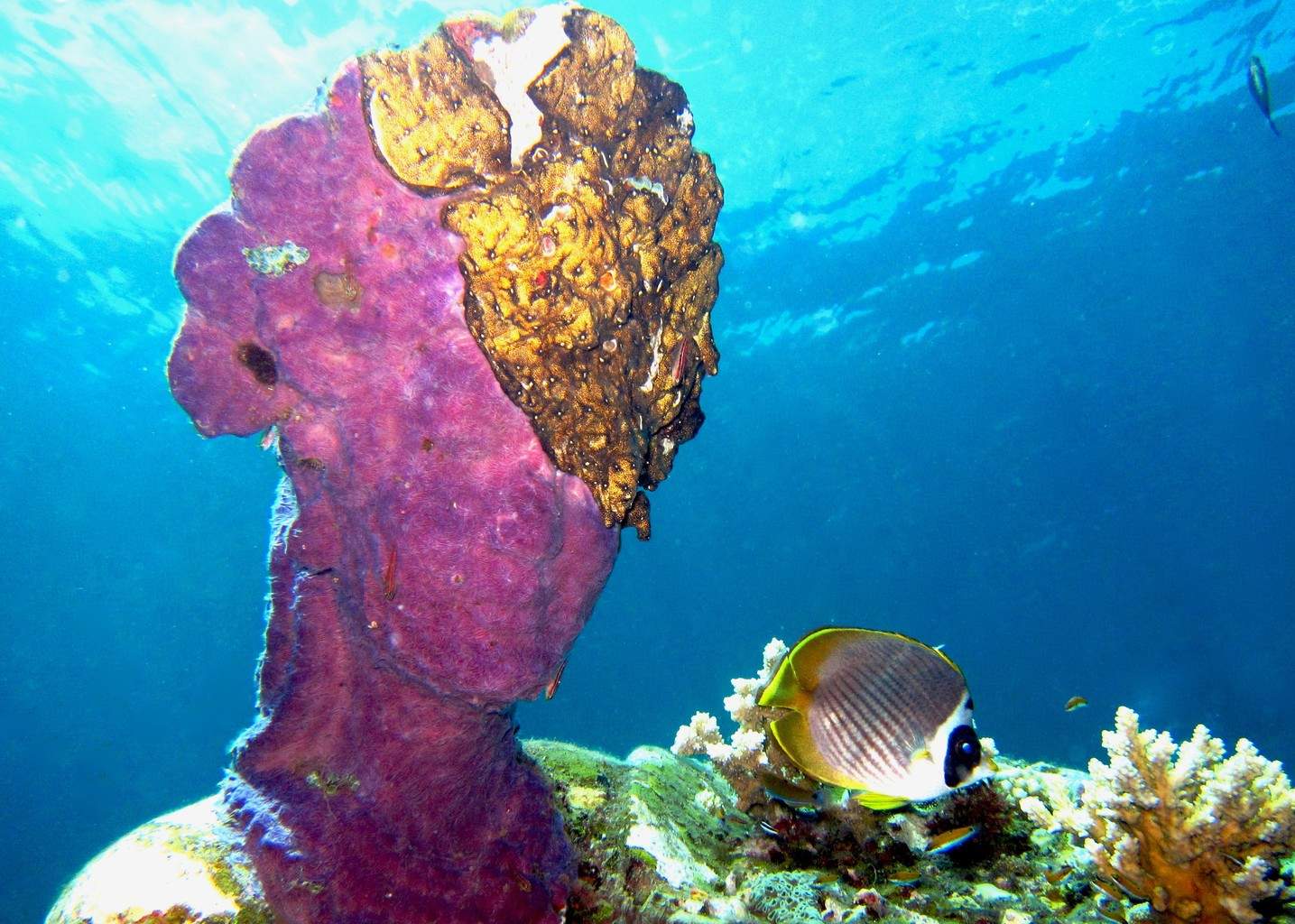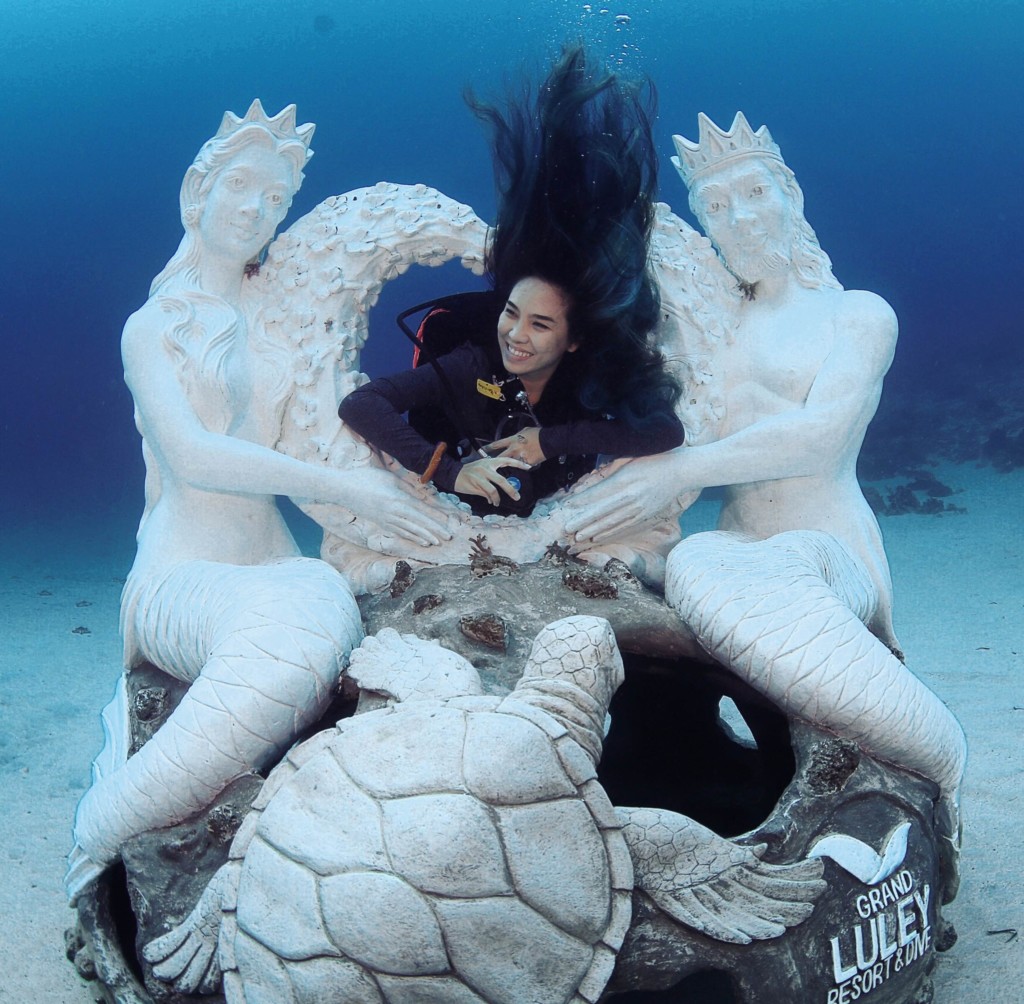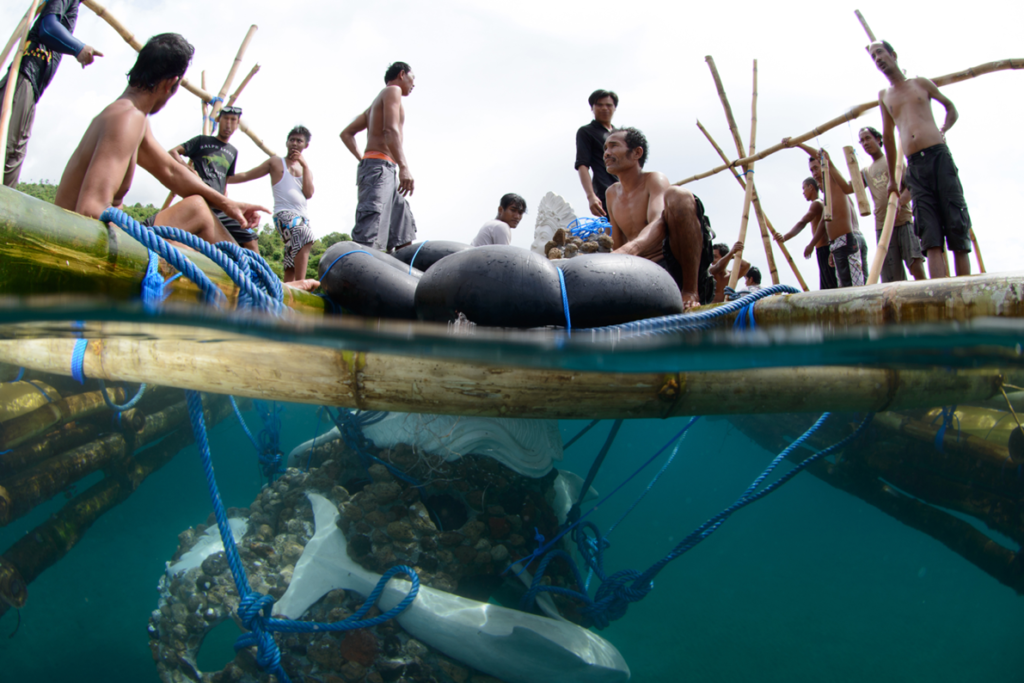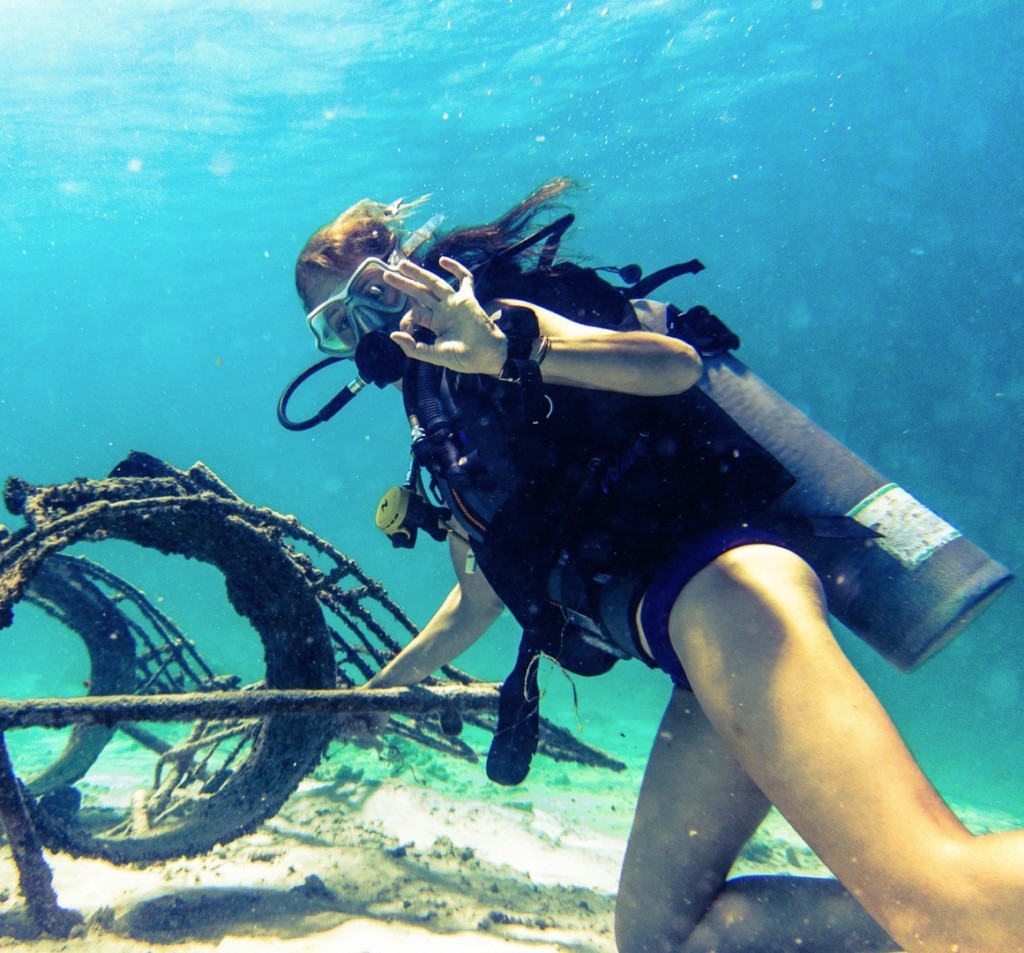Marine Life & Conservation Blogs
Serendipity

Serendipity means a “fortunate happenstance” or “pleasant surprise”. The New Oxford Dictionary of English defines serendipity as the occurrence and development of events by chance in a satisfactory or beneficial way, understanding the chance as any event that takes place in the absence of any obvious project.
This was exactly how I came to connect with Ocean Crest Alliance who the Marine Foundation are forming a new partnership with. I was asked by the TerraMar project to be a guest host for the Daily Catch on Global Ocean TV. As with any request I receive, I researched the organisation and saw the great work they are doing. I would recommend you help this cause and that of our seas and get yourself an ocean passport.
I wanted to better understand what they would expect from me as a guest presenter, so I watched a number of previous episodes and was fortunate enough to discover one featuring Joseph Ierna, the founder of Ocean Crest Alliance. OCA is a 501(c)(3) non-profit organisation, registered in the United States and the Bahamas and was established to create awareness, to inspire, and to educate others about our Earth and Oceans and to illustrate the real issues we all face today. Joseph like myself has fallen in love with our Oceans and Seas and as I watched their Global TV episode I had that tingling feeling I get when I know something serendipitous is brewing.
I rode the wave, as they say, and looked up their website to learn their goal is ‘to Honor, Protect, and Restore the Health of the Worlds Oceans and the life of the Earth’s Systems through Conservation, Research, Education, Science and Technology programs’. These objectives share much in common with those of the Marine Foundation’s work and are very much in alignment with my own dreams. They were just lacking the key word that is the essence of our unique approach, creativity, and I knew I wanted to connect with them.
As I read on, I was very happy to learn they have worked closely with the community and government in establishing the 215,000 acre Marine Protected Area called Long Island Marine Management Area, or LIMMA for short. LIMMA from the onset has engaged the locals and are looking at some very innovative ways to establish long term economic based solutions. This innovative approach immediately struck me.
By unfortunate chance it has been discovered that the traditional approach to funding and implementing an MPA is fraught with problems, often implemented through a top down approach. There is insufficient socialisation and people resent the laws and restrictions that they feel are implemented by outsiders, taking away their livelihoods. “ A careful consideration of the receptivity of the fishing communities to MPAs is fundamental for their long term success.” (Agardy et al. 2003).
Even a seemingly windfall success of large amounts of funding has its downfalls, with initial investments going into complex infrastructures that cannot be sustained longterm, either economically or by an untrained local community. In the long term, leaving these MPA areas underfunded with no way to implement the laws and a local community who are not invested. I saw this first hand at Bunaken where we installed ‘the love mermaids” last November. This MPA was once considered such a success but I saw first hand evidence that dynamite fishing was still occurring; the reefs were suffering a decline in health and even though large funding had paid for boats and staff to enforce fishing restrictions, they were too scared to go out and defend their seas.
In a conversation I later had with Joseph (once I had asked Robert Foos of the Terra Project to connect us), we discussed that with people so desperate and so much money able to be made in illegal fishing, It is very complicated to enforce fishing restrictions… and dangerous.
An MPA’s best asset is a vested local community; if they feel empowered and positioned to benefit from its success, there is an inherent and genuine love for their heritage that is hard to buy! I hate being told what to do so I can only imagine what it must feel like for a fisherman who’s family has fished for generations that now they must now stop.
The Economist William Russell Easterly who specialises in economic development wrote an interesting book called The White Man’s Burden (the title refers to Rudyard Kipling’s famous poem of the same name). Controversially, Easterly suggests that ’messianic do-good missions are ultimately modern reincarnations of the infamous colonial conceit.’ I have seen many so called experts imposing theories thought out in institutions far away from the sea!
I am not suggesting that grants should be extinguished. We certainly rely on them, but valuing the local community and their wisdom and love for their sea is essential. A fisherman understands when their livelihood is under threat and like any father wishing to feed his family, I think learning how to take control and feel like a decider in the fortune of their own destiny is something that when not permitted brings tears to my eyes.
I love the OCA’s Lionfish Fisheries Program which has been developed to bring direct and immediate economic opportunity for large numbers of the local community. The program shows that removal of lionfish is an effective management tool to protect and preserve the biodiversity of the Bahamas’ native fish life, and a much welcome and needed addition to the local economy! These are an invasive species that have come into the Caribbean from The Indo Pacific in the hull of ships in their Ballast water. Ballast water is water carried in ships’ ballast tanks to improve stability and balance. The water is taken into the hull or discharged when cargo is unloaded or loaded to maintain weight or when a ship needs extra stability in foul weather. When ships take on the ballast water, plants and animals that live in the ocean are also picked up. The cargo travels around the Globe and the same animals are then released into foreign seas. The Lionfish look stunning but are predators, and destroy the eco-system’s delicate balance in their new marine home. They are challenging to catch as they have toxic spines but they are actually incredibly good to eat. On my recent trip to Belize I came across a jewellery artist who was cleverly making stunning earrings and other items from the tails and fins.
OCA is also establishing a Coral Nursery Restoration Program, and this is where The Marine Foundation comes in. We bring a uniquely creative approach; Our Living sculpture in the Sea program has proven highly effective as an aspect to a successful marine management strategy. I feel it was by a seemingly unfortunate events that I was even able to conceive the Living Sculpture in the sea Program. During my research it was divers love of wreck diving that seeded the concept. Ships that have come to an untimely end and sunk to the bottom of our seas only to become thriving marine eco-systems.
‘The notion of serendipity is a common occurrence throughout the history of scientific innovation such as Alexander Fleming’s accidental discovery of penicillin in 1928. Innovations presented as examples of serendipity have an important characteristic: they were made by individuals able to “see bridges where others saw holes” and connect events creatively, based on the perception of a significant link.’
Our times are calling to each and every one of us to be creative and innovative. We desperately need to realise we have some major challenges to face in our beautiful world both above and below and I am thrilled to announce The Marine Foundation’s new partnership with Ocean Crest Alliance.
“I have noticed that even those who assert that everything is predestined and that we can change nothing about it still look both ways before they cross the street.” – Stephen Hawking
Blogs
Saba’s Plan for a Coral Comeback

Saba has an exciting new initiative to restore its coral reefs. This new project, running from 2024 to 2026, will focus on reviving key species in the island’s underwater ecosystems. With a collaborative team from the Saba Conservation Foundation (SCF) and Van Hall Larenstein (VHL) University of Applied Sciences, the project aims to restore both corals as well as sea urchins.
This initiative is centered around coral restoration, specifically reviving two essential coral species—staghorn coral (Acropora cervicornis) and elkhorn coral (Acropora palmata). By mapping parent colonies and using a technique known as coral gardening, SCF will create and maintain coral nurseries. These corals will eventually be outplanted at key reef sites around Saba to not only expand the number of coral colonies, but also provide essential fish habitat. The project focusses on installing coral nurseries, training staff with the newest techniques and starting with the restoration of key reef sites.

Reef Cleaners to the Rescue
It’s not just corals getting a makeover—this project also shines a spotlight on the essential role of grazers, particularly sea urchins. VHL is leading the charge on cultivating and restocking two key sea urchin species, West Indian sea egg (Tripneustes) and long-spined sea urchin (Diadema), known for their ability to keep algae in check. By removing algae, which are important competitors of corals, they help the coral to thrive. By restoring these “reef cleaners,” Saba’s project will give corals the breathing room they need to grow, setting the stage for a healthier, more balanced marine ecosystem.
From Tiny Urchins to Big Goals
The project will be funded as part of the Dutch Government’s Nature and Environment Policy Plan (NEPP) 2020-2030 for the Caribbean Netherlands, a comprehensive initiative aimed at conserving and restoring the unique natural environments of the Dutch Caribbean islands, including Saba, St. Eustatius, and Bonaire. This project is aiming for big milestones: build and maintaining coral nurseries, the expansion of urchin cultivation facilities, and the creation of a dedicated research center. By 2026, the project hopes to ramp up coral and grazer restoration, with the ultimate goal of extending these efforts across the Dutch Caribbean. By linking local initiatives to broader regional goals, Saba’s restoration project promises to leave a lasting impact on both the environment and the community.
Find out more about the DCNA at dcnanature.org.
Blogs
Reef-World marks two decades of marine conservation: strengthening impact amid coral reef threats

Empowering ocean stakeholders to tackle future challenges and ensure the survival of coral reefs and humanity
2024 marks the 20th Anniversary of The Reef-World Foundation’s tireless efforts for global coral reef conservation. The UK charity is the international coordinator of the UN Environment Programme’s Green Fins initiative, known as the leading voice in sustainable marine tourism. Today, Reef-World released its 2023-2024 Impact Report outlining a year of substantive growth and impact in its marine conservation programmes.

Impact Report Highlights:
- Impressive improvements in environmental behaviours to protect coral reefs by the marine tourism industry as the global participation of Green Fins increases.
- Continued capacity building for government and NGO staff to effectively manage marine tourism activities in Asia, Caribbean and Red Sea regions.
- For the first time in Green Fins’ 20-year history, tourism operators have achieved ‘Best Environmental Performer’ status by demonstrating the lowest possible environmental impact in their environmental assessments. In 2024, three dive operators achieved this challenging milestone.
- Significant increases in global participation of Reef-World’s innovative digital conservation tools.
- 138 Green Fins dive operator members achieved the strict threshold for PADI Eco Center recognition.
- Developed four new educational materials and translated two into 16 languages to support the marine tourism industry in achieving sustainability targets.
- Establishing a new Reef-World Development strategy and recruiting new roles – Development and Programmes Managers.
- Reef-World’s board welcomes new Chair and Trustees strengthening organisational leadership.

Reef-World started as a one-person mission to inspire and empower communities to act in conserving and sustainably developing coral reefs and related ecosystems. Today, the team of 12 continues to meet this mission by inspiring and empowering the global marine tourism community to be exemplary sustainability leaders by using the Green Fins guidelines and tools to simultaneously use and protect the world’s precious reefs.
In April 2024, the fourth global coral reef bleaching event was confirmed. Reef-World’s work has never been more urgent as the marine environment, and the benefits they provide humanity, continue to be eroded by global threats. The reduction of local threats, like those from the marine tourism industry, is an essential step to ensuring a future where coral reefs survive and continue to support the millions of people who depend on their ecosystem benefits. Reef-World’s work buys time for coral reefs and related ecosystems to be resilient to the impacts of global threats.
“Right now our corals are facing the greatest fight of their existence as the terrifying predictions of the steps towards their complete extinction are starting to come true. But all is not lost, reefs are resilient and they have existed on this planet for millions of years. We must take action now, to buy time for reefs by reducing threats facing them and allowing them to react and adjust to the changing environment they need to survive in.” – Chloe Harvey, Executive Director
Looking Forwards:
Like coral reefs, the Reef-World team needs to be resilient in the face of the complex challenges of the conservation sector. Reef-World has invested significantly in developing a Culture of Care to ensure the well-being of its team on a daily basis, continuing to be an exemplary employer to enable its team to best achieve the mission for coral reef conservation.
With the foundations of a Culture of Care and organisational development laid, Reef-World is emerging from the end of a natural organisation life cycle, that brings the challenges of growth and scale, stronger than ever. With a new strategy in place to generate much needed resources, Reef-World is excited for the opportunities to leap forward, continue to scale our impact and lean into new innovations and untapped opportunities for marine conservation.
We continually strive to become a forward-thinking organisation that delivers on our goals and commitments to our stakeholders with fresh approaches and not being afraid of steering away from a “normal approach.” This approach is not only applied to our programmes of work but also internally and carries over to our Culture of Care for our team.” — JJ Harvey, Operations Director

The Reef-World Foundation is immensely grateful for the continued support of its grant funders: UN Environment Programme, IUCN’s Blue Natural Capital Financing Facility, Adventure Travel Conservation Fund, PADI Aware Foundation, and World Nomads Footprints Program.
Reef-World would also like to express its gratitude to international partners whose vital support has resulted in significant tangible benefits for our work and mission: PADI; Professional SCUBA Schools International (PSS); Explorer Ventures; 1% for the Planet; ZuBlu; Snorkel Venture, GSTC; Dive O’Clock; Seven Dragons; DiveAssure and Eco Beach, without whom these achievements would not be possible.
The full 2023–2024 Annual Impact Report is available on Reef-World’s website.
-

 News1 month ago
News1 month agoIconic SS United States to become the World’s Largest Artificial Reef
-

 Blogs3 months ago
Blogs3 months agoNovoScuba’s Game-Changing Approach for Dive Store Owners: WE PAY YOU!
-

 News2 months ago
News2 months agoBook Review – 52 Assignments: Underwater Photography
-

 Gear News2 months ago
Gear News2 months agoDYNAMICNORD – New German diving brand enters the British market
-

 News2 months ago
News2 months agoExploring Cenote El Pit: A Diver’s Dream
-

 Gear News2 months ago
Gear News2 months agoTry BARE drysuits (and maybe even win one!) this Friday with Sea & Sea at North West Dive Fest
-

 News3 months ago
News3 months agoComing Soon – 52 Assignments
-

 News3 months ago
News3 months agoSave £200 per person per week at Pole Pole Lodge with Dive Worldwide
















